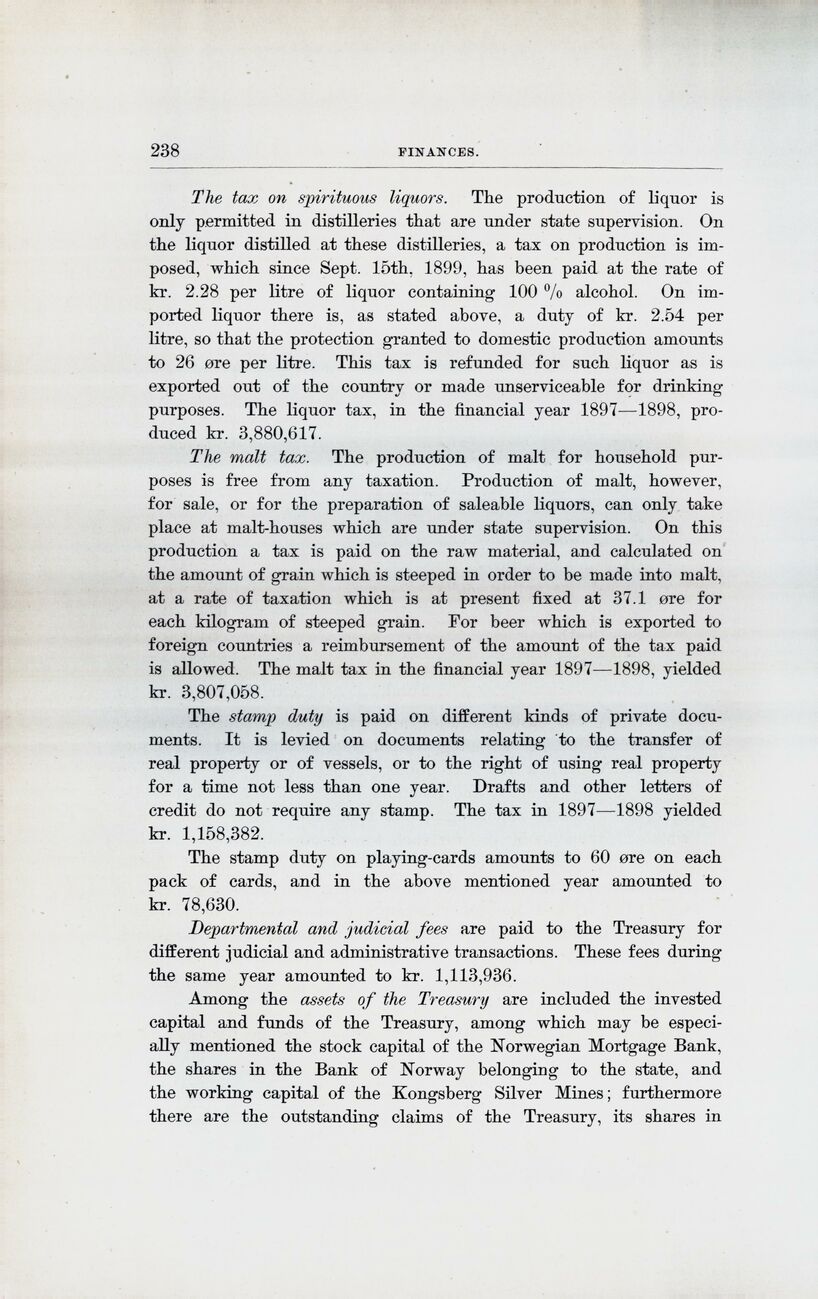
Full resolution (JPEG) - On this page / på denna sida - Finances, by J. J. Woxen

<< prev. page << föreg. sida << >> nästa sida >> next page >>
Below is the raw OCR text
from the above scanned image.
Do you see an error? Proofread the page now!
Här nedan syns maskintolkade texten från faksimilbilden ovan.
Ser du något fel? Korrekturläs sidan nu!
This page has been proofread at least once.
(diff)
(history)
Denna sida har korrekturlästs minst en gång.
(skillnad)
(historik)
The tax on spirituous liquors. The production of liquor is
only permitted in distilleries that are under state supervision. On
the liquor distilled at these distilleries, a tax on production is
imposed, which since Sept. 15th, 1899, has been paid at the rate of
kr. 2.28 per litre of liquor containing 100 % alcohol. On
imported liquor there is, as stated above, a duty of kr. 2.54 per
litre, so that the protection granted to domestic production amounts
to 20 øre per litre. This tax is refunded for such liquor as is
exported out of the country or made unserviceable for drinking
purposes. The liquor tax, in the financial year 1897—1898,
produced kr. 3,880,017.
The malt tax. The production of malt for household
purposes is free from any taxation. Production of malt, however,
for sale, or for the preparation of saleable liquors, can only take
place at malt-houses which are under state supervision. On this
production a tax is paid on the raw material, and calculated on
the amount of grain which is steeped in order to be made into malt,
at a rate of taxation which is at present fixed at 37.1 øre for
each kilogram of steeped grain. For beer which is exported to
foreign countries a reimbursement of the amount of the tax paid
is allowed. The malt tax in the financial year 1897—1898, yielded
kr. 3,807,058.
The stamp duty is paid on different kinds of private
documents. It is levied on documents relating to the transfer of
real property or of vessels, or to the right of using real property
for a time not less than one year. Drafts and other letters of
credit do not require any stamp. The tax in 1897—1898 yielded
kr. 1,158,382.
The stamp duty on playing-cards amounts to 60 øre on each
pack of cards, and in the above mentioned year amounted to
kr. 78,630.
Departmental and judicial fees are paid to the Treasury for
different judicial and administrative transactions. These fees during
the same year amounted to kr. 1,113,936.
Among the assets of the Treasury are included the invested
capital and funds of the Treasury, among which may be
especially mentioned the stock capital of the Norwegian Mortgage Bank,
the shares in the Bank of Norway belonging to the state, and
the working capital of the Kongsberg Silver Mines; furthermore
there are the outstanding claims of the Treasury, its shares in
<< prev. page << föreg. sida << >> nästa sida >> next page >>